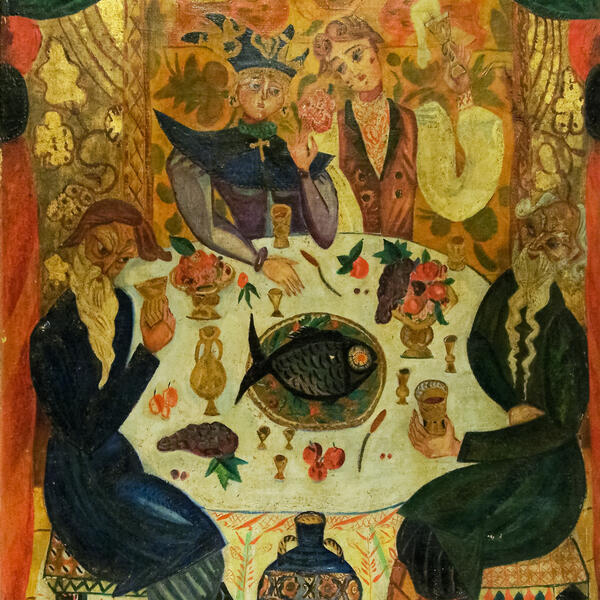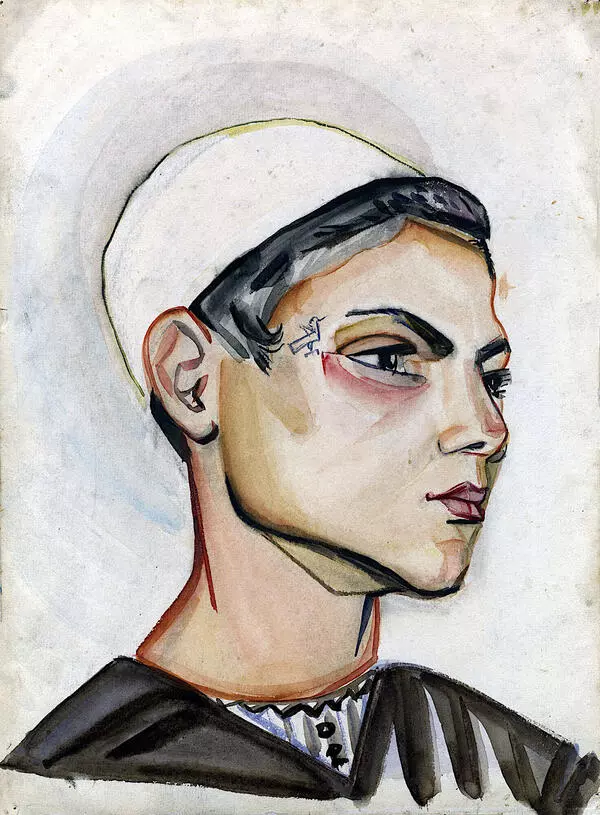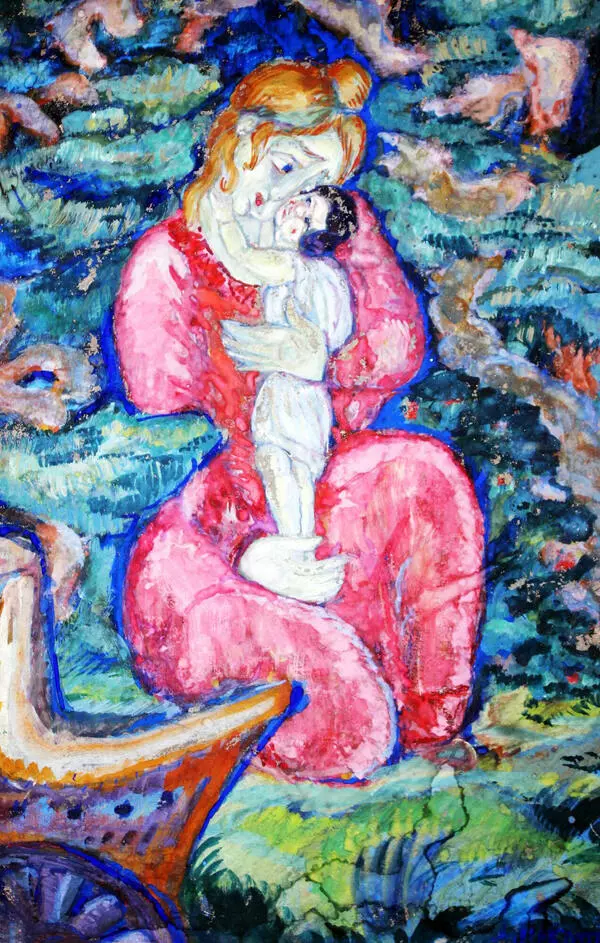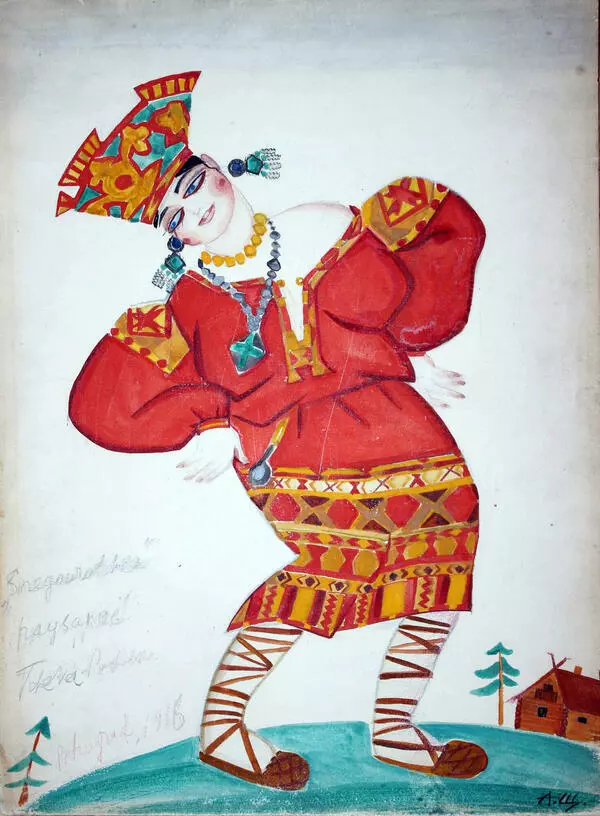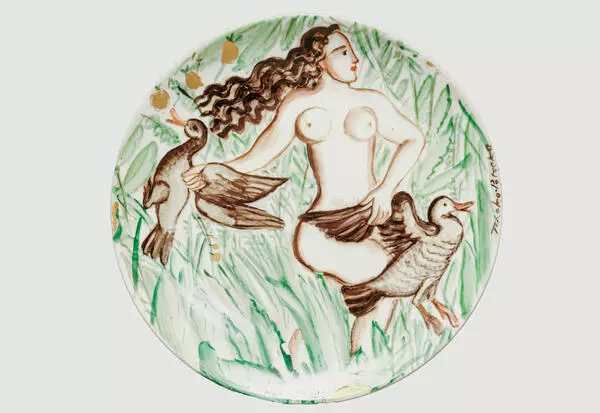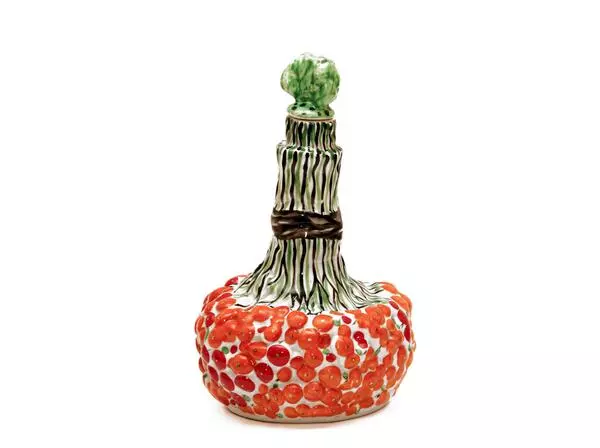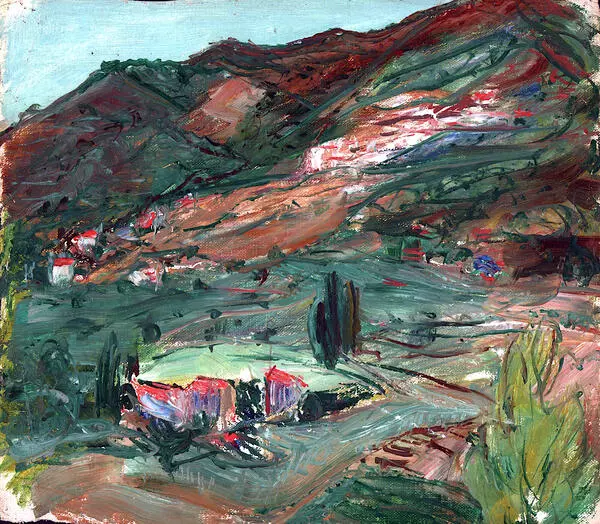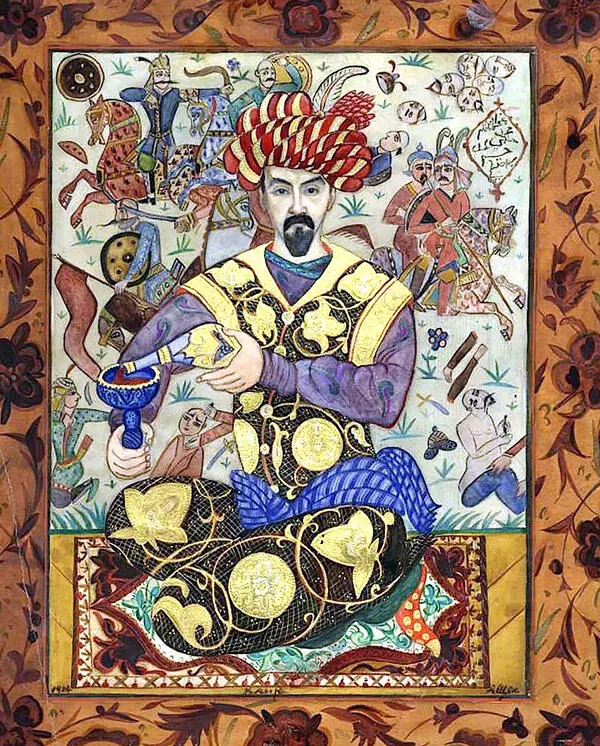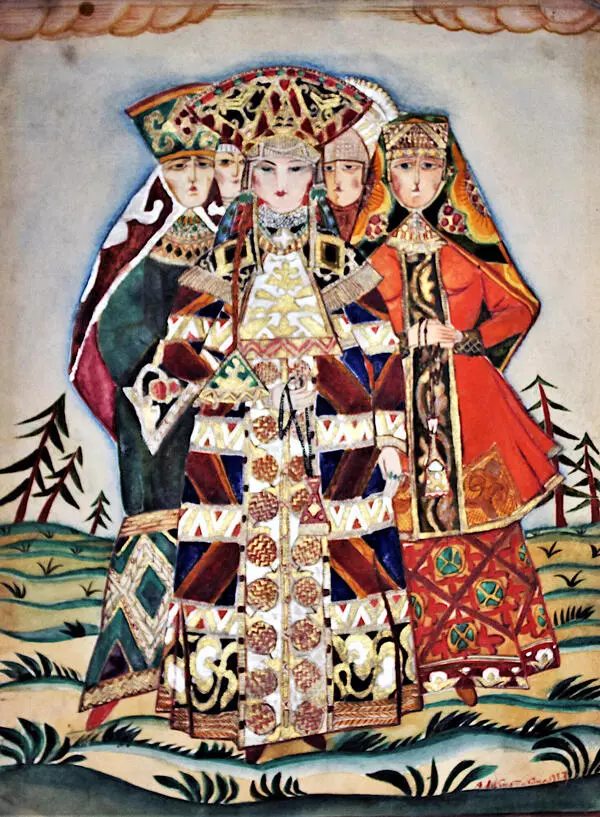The painting “Matchmaking” is an unusual, but textbook example of Alexandra Vasilievna Shchekatikhina-Pototskaya’s work. It strikes the viewer with its large size, which is quite uncommon for a porcelain artist. The plot figuratively conveys the feeling of happiness and elation that Shurochka Shchekatikhina experienced after joining Bilibin in Egypt, during the period of their engagement and subsequent marriage.
In 1922, Alexandra Vasilievna wrote a letter to her teacher and longtime friend Ivan Yakovlevich Bilibin, who was living in Cairo at that time. In it, she described that she had recently been widowed and lived alone with her young son. The letter touched the artist very much. In one day, he received two letters from two of his students — one letter from Europe from Lyudmila Chirikova, with whom Bilibin was hopelessly in love, with a refusal, and the second, “written in the most tender words”, from Alexandra Shchekatikhina-Pototskaya. The artist saw this as a sign of fate and the very next day sent Shurochka a telegram to Petrograd: “Become my wife. I am waiting for an answer”. Two days later the answer came: “I agree with one condition that I cannot be separated from my son”. Alexandra Vasilievna received the permission from the People’s Commissariat to go on a business trip for an internship at the Berlin Porcelain Manufactory. She did not go to Germany, however. At the end of February 1923, Shchekatikhina arrived in Cairo with her son on the steamship “Semiramis”.
It is impossible not to notice that the presented work is compositionally close to the famous “Trinity” by Andrei Rublev. The conscious reference to this Russian icon reveals many meanings in “Matchmaking”: the joy of love and being, the festiveness of the event, and the assertion that higher powers approve of this union. In the foreground, two gray-bearded elders sit to the right and left of the table. Probably, this is the groom’s father (the matchmaker) and the bride’s father. In the background at the table, we can see the bride and groom. The canvas is painted in a flat decorative manner characteristic of Shchekatikhina-Pototskaya, in bright juicy colors. The artist depicts the figures with a hint of reverse perspective — a technique of medieval painting. Thus, the viewer fully sees the plane of the table. It seems inverted in accordance with the laws of reverse perspective.
The painting was a favorite work of Alexandra Vasilievna Shchekatikhina-Pototskaya, with which she did not part. Earlier, in 1919, the artist had created a dish “Wedding” with the same plot (it is housed in the State Hermitage Museum).
In 1922, Alexandra Vasilievna wrote a letter to her teacher and longtime friend Ivan Yakovlevich Bilibin, who was living in Cairo at that time. In it, she described that she had recently been widowed and lived alone with her young son. The letter touched the artist very much. In one day, he received two letters from two of his students — one letter from Europe from Lyudmila Chirikova, with whom Bilibin was hopelessly in love, with a refusal, and the second, “written in the most tender words”, from Alexandra Shchekatikhina-Pototskaya. The artist saw this as a sign of fate and the very next day sent Shurochka a telegram to Petrograd: “Become my wife. I am waiting for an answer”. Two days later the answer came: “I agree with one condition that I cannot be separated from my son”. Alexandra Vasilievna received the permission from the People’s Commissariat to go on a business trip for an internship at the Berlin Porcelain Manufactory. She did not go to Germany, however. At the end of February 1923, Shchekatikhina arrived in Cairo with her son on the steamship “Semiramis”.
It is impossible not to notice that the presented work is compositionally close to the famous “Trinity” by Andrei Rublev. The conscious reference to this Russian icon reveals many meanings in “Matchmaking”: the joy of love and being, the festiveness of the event, and the assertion that higher powers approve of this union. In the foreground, two gray-bearded elders sit to the right and left of the table. Probably, this is the groom’s father (the matchmaker) and the bride’s father. In the background at the table, we can see the bride and groom. The canvas is painted in a flat decorative manner characteristic of Shchekatikhina-Pototskaya, in bright juicy colors. The artist depicts the figures with a hint of reverse perspective — a technique of medieval painting. Thus, the viewer fully sees the plane of the table. It seems inverted in accordance with the laws of reverse perspective.
The painting was a favorite work of Alexandra Vasilievna Shchekatikhina-Pototskaya, with which she did not part. Earlier, in 1919, the artist had created a dish “Wedding” with the same plot (it is housed in the State Hermitage Museum).

